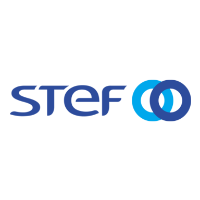
STEF
European leader in cold logistics (-25°C to +18°C), STEF masters and brings together transport, logistics and IT skills for all temperature sensitive and agro food products. Le groupe offers its clients -Food Industry, Retail and Food Service- Supply-Chain solutions tailored to their specific needs. STEF employs 16,000 staff members in 7 European countries (Belgium, Spain, France, Italy, the Netherlands, Portugal, Switzerland). The Group's strength resides not only in its people but also in its assets: 216 platforms and warehouses and 4,000 vehicules, half self-owned. STEF's annual turnover for 2015 stood at € 2,826.2 M.